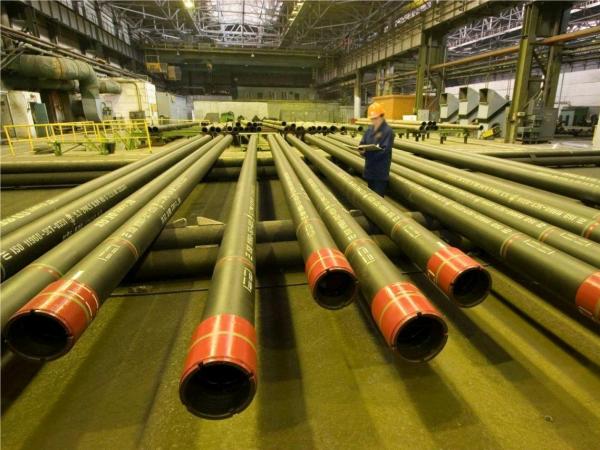Types of Octg Casing and Their Applications
Oil Country Tubular Goods (OCTG) are critical components in the exploration, drilling, and production of oil and gas wells. Among the various types of OCTG, casing serves a vital role in providing structural integrity to the wellbore and protecting it from formation fluids and external forces. Casing is typically made of steel and comes in a variety of types, each designed for specific applications and environments. In this comprehensive guide, we will explore the different types of OCTG casing and their applications, highlighting their unique features and benefits.

Conventional Casing
a. Surface Casing:
Surface casing is the first casing string set in a well and is typically installed to protect freshwater aquifers and prevent wellbore instability near the surface. It is usually large in diameter and is cemented to isolate shallow formations. Surface casing provides the foundation for subsequent casing strings and plays a crucial role in well control during drilling operations.
b. Intermediate Casing:
Intermediate casing is run after drilling through the surface casing and is set to protect the well from unstable formations and prevent blowouts. It provides additional isolation for specific zones and helps control well pressure during drilling. Intermediate casing is generally smaller in diameter compared to surface casing and is cemented in place.
c. Production Casing:
Production casing, also known as the main casing or conductor pipe, is the final casing string installed in the well. It is designed to withstand the pressures and temperatures encountered during production. Production casing provides structural integrity to the well, facilitates the extraction of hydrocarbons, and isolates production zones from other formations. This casing type is often the longest and the smallest in diameter among the conventional casings.
Liner Casing:
a. Conductor Liner:
A conductor liner is used in wells where the topmost formations are unstable or unconsolidated. It is installed as a protective casing string to support the wellhead and subsequent casing strings. Conductor liners are typically large in diameter and are cemented in place to provide stability to the wellbore.
b. Intermediate Liner:
Intermediate liners are used when there are multiple unstable formations or zones of interest in the well. They provide additional protection and support for the wellbore, allowing for the isolation of specific intervals. Intermediate liners are smaller in diameter compared to conductor liners and are usually cemented to provide zonal isolation.
c. Production Liner:
Production liners are installed when there is a need for additional casing to isolate specific production zones or to repair damaged primary casing. They are run inside the existing casing and are set at the desired depth. Production liners help maintain the integrity of the well and allow for efficient production from isolated zones.
Tieback Casing:
Tieback casing, also known as liner tieback, is used in situations where the wellbore extends beyond the primary casing, often due to sidetracking or drilling additional sections. Tieback casing is run inside the existing casing and is used to secure and stabilize the wellbore. It provides a reliable pathway for fluid communication and ensures well integrity.
Corrosion-Resistant Alloy (CRA) Casing:
Corrosion-Resistant Alloy (CRA) casing is employed in wells where the presence of corrosive fluids or high temperatures requires superior resistance to corrosion. CRA casing is typically made of stainless steel or other corrosion-resistant alloys. It offers enhanced longevity and reliability in challenging environments and helps prevent casing failure due to corrosion.
Expandable Casing:
Expandable casing, also known as expandable tubulars, are designed to address specific wellbore challenges such as unstable formations, lost circulation zones, or excessive borehole enlargement. These casings can be expanded radially using mechanical or hydraulic means, allowing them to conform to the wellbore's shape and seal off problematic zones effectively.
High Collapse Casing:
High collapse casing is used in wells that encounter high external pressures during drilling and production. These casings are designed with thicker walls and enhanced collapse resistance to withstand the extreme forces exerted on them. High collapse casing ensures wellbore stability and helps prevent catastrophic failures under high-pressure conditions.
Premium Connection Casing:
Premium connection casing is utilized when a higher level of performance is required in terms of sealability, torque strength, and tensile strength. These casings feature specialized threaded connections that offer improved reliability and integrity. Premium connection casings are commonly used in complex drilling scenarios, deepwater wells, and critical applications.
Conclusion:
Choosing the right type of OCTG casing is crucial for the successful drilling and production of oil and gas wells. Each type of casing serves a specific purpose and is designed to meet the challenges presented by different geological formations and wellbore conditions. By understanding the various types of OCTG casing and their applications, operators can ensure optimal well integrity, productivity, and safety throughout the life cycle of a well.
Read more: What is OCTG Casing? or What are the grades of OCTG casing?













 Eastern Steel Manufacturing Co.,Ltd not only improve product production and sales services, but also provide additional value-added services. As long as you need, we can complete your specific needs together.
Eastern Steel Manufacturing Co.,Ltd not only improve product production and sales services, but also provide additional value-added services. As long as you need, we can complete your specific needs together.










